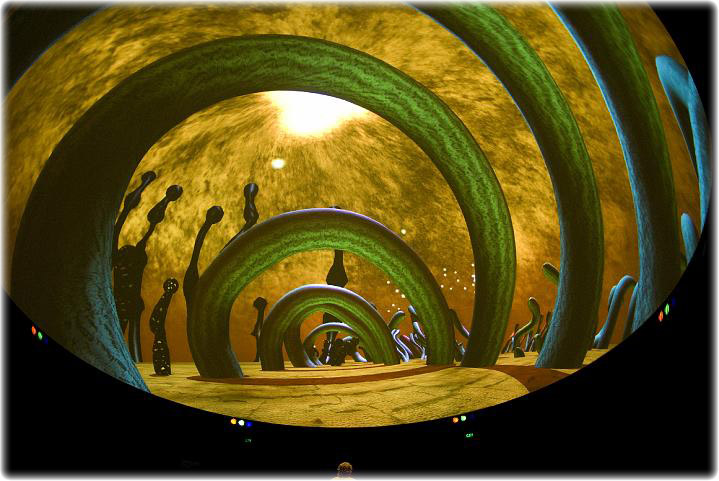The Los Angeles Abstract Movie Workshop (2001-2014)
The workshop was for film and video artists working in abstraction. I started the group in October, 2001 when I saw a need for like-minded artists to have a forum for their work. Abstract movies have been created as long as there have been movies, but the work hadn’t achieved any kind of popularity in the US or worldwide. We needed to find ways to come together and share our love of art, and to inspire us to make more work.
More than just a salon where we watched other people’s artworks, the workshop was a place to share new works and works-in-progress. It was a place and time to get constructive feedback and criticism from fellow artists who more than anyone understand what it means to create art.
The workshop was always small, but it was instrumental to our creating many new works. We don’t all agree on aesthetics or philosophy, but we respect each other’s work. We try to keep the atmosphere welcome and friendly. That helps people feel comfortable to bring new untested work, but it also allows us to be candid and good-humored in our criticism.
For many of us, myself included, it was the support we needed to restart our artistic ambitions after many years of neglecting them. Some of us have carved out careers that began with the support we got from this group.
We met every month, and only missed a couple of months over the 12 1/2 years that I organized the workshop. Many people attended over the years. Many came only once, some came occasionally. Thanks goes out to those who came to share their art. There was a core handful of people who attended regularly. They made the workshop a joy to attend. I relied on their dedication and support of the activity to make the meetings friendly and inspirational. Thanks goes out to die-hards Andy Kopra, Audri Phillips, Chris Casady, Joe Merrell, and Scott Dickson.
David Wilson, founder of the Museum of Jurassic Technology, was gracious enough to let us use the “mini movie palace” which he was building in the museum. He had just started creating the space when we began the workshop. Month by month we’d come to the museum to witness the progress of the design and construction of the theater and the adjoining spaces. Each month held a new surprise as the theater took shape, a 14-seat screening room with plush interiors, a domed ceiling, and a proscenium surrounding the screen. It’s a cozy, intimate space where magic happens.
In early 2014, I decided to step away and stop organizing the workshops. I had moved on in a different direction with my art, so I didn’t think I was the right person to lead it any more. It was also a different time than when we started. Thanks to social media and an explosion of outlets for expression, I don’t think we need the workshop in that format. I also felt the enthusiasm waning, so I thought we could end it on a high note. It wasn’t an easy decision, so rather than formally disbanding the meetings, I left the workshop in the hands of others to continue it or discontinue it as they pleased.
Guidelines
After a few workshops and discussing with friends about what worked and didn’t work to support the group, I came up with a some simple, but pretty strict, guidelines. I suggest you consider these guidelines if you’re starting your own workshop or group.
We only show works by artists who are present at the workshop. There are two reasons for this:
It keeps the pressure on us to produce works. The whole point of the workshop is to get us to produce, so that we feel obliged to make something every month or so. We shouldn’t substitute our lack of work with “filler” material. As practicing artists, we need to be creating new works, not watching “re-runs”.
By limiting the works to those of artists who are present, we keep the discussions fair and even-handed. It’s not fair to criticize an artist’s new work when the artist is absent, and it’s not fair to give short shrift of those in attendance.
